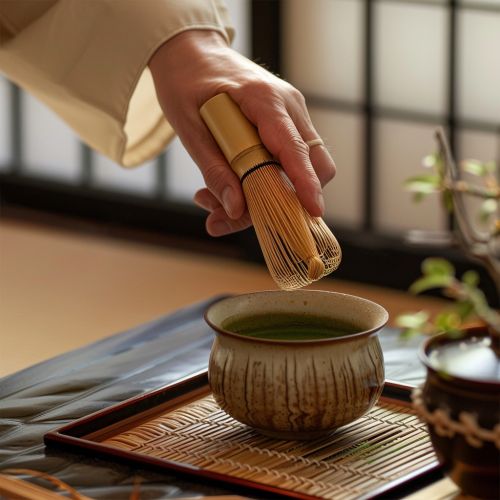Japanese Tea Ceremony Testing
History
The Japanese tea ceremony, also known as the Way of Tea, is a Japanese cultural activity involving the ceremonial preparation and presentation of matcha (抹茶), powdered green tea. The tea ceremony dates back to the 9th century when tea was first introduced to Japan from China. The practice was initially limited to Buddhist monks and the elite class, but it gradually spread to all levels of society.


Philosophy
The Japanese tea ceremony is more than just drinking tea. It is a spiritual experience that embodies the principles of harmony (和), respect (敬), purity (清), and tranquility (寂). These principles are derived from the teachings of Zen Buddhism and are reflected in every aspect of the ceremony, from the preparation of the tea to the architecture of the tea room.
Tea Ceremony Equipment
The tea ceremony involves the use of several unique pieces of equipment, each with its own name and purpose. The main tools used in the ceremony include the chawan (tea bowl), chasen (bamboo whisk), chashaku (bamboo tea scoop), and the natsume (tea caddy). Other important items include the mizusashi (water jar), kama (kettle), and furo (brazier).
Procedure
The tea ceremony is a carefully choreographed process that requires precision and grace. The host of the ceremony begins by preparing the tea room and the utensils. The guests then enter the tea room and admire the hanging scroll and the flower arrangement, which are carefully chosen by the host to reflect the theme of the ceremony. The host then begins to prepare the tea, first by serving a meal and sweets, and then by whisking the matcha with hot water in the chawan. The tea is then served to the guests, who drink it in a specific order and manner. The ceremony concludes with a discussion about the utensils used in the ceremony.
Variations
There are several variations of the Japanese tea ceremony, each with its own unique style and procedure. The two main schools of tea ceremony are the Urasenke and Omotesenke schools, which were founded by the descendants of Sen no Rikyu, the 16th-century tea master who is considered the father of the tea ceremony. Other notable schools include the Mushakojisenke and Yabunouchi schools.
Influence
The Japanese tea ceremony has had a profound influence on various aspects of Japanese culture, including art, architecture, and philosophy. It has also played a significant role in shaping the concept of hospitality in Japan.
